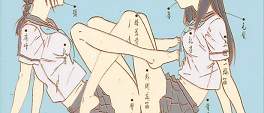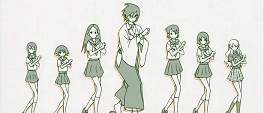3 Episode Taste Test: Ookami-san to Shichinin no Nakamatachi (Ookami and her Seven Companions)
Playing fast and loose with fairy tales, Ookami-san to Shichinin no Nakamatachi is a surprising comedy that straddles the line between familiar and fresh, whimsically mashing up elements pluck from its contemporaries. Certainly the protagonist's hair colour and demeanour could have been lifted wholesale from Toradora, her pugilistic attitude and deviant sidekick are another matter. So it is with the rest of the cast, just when the measure of a character seems to be had, a tangential quirk is revealed turning them on their head. The strength of the show then is defying expectation and in three episodes it proves it has the legs and the occasional comedic timing to pull off its crazy take on well loved stories, but whether it will be able to maintain that for a further ten is up for debate.
Otogi High School has its share of interesting clubs, the "bank" though is different and specialises in doing favours for people in times of need. The only catch is that person owes them a favour to be collected at a later time. So it is that Ryouko, the eponymous Ookami, and her diminutive companion Ringo become part of the bank and carry out some of the more physical jobs they have to deal with. Surrounded by other oddballs such as the cross-dressing president, a bespectacled and thoroughly bonkers scientist, and a boy with social anxiety disorder who wields a mean slingshot. Together they deal with the variety of cases that come to the attention of the bank: from a girl who doesn't want her senior in the tennis club to leave to someone who wants desperately to win the school's beauty pageant; regardless of the problem, Ryouko often needs to brandish her iconic cat-shaped boxing gloves to achieve a solution.



















